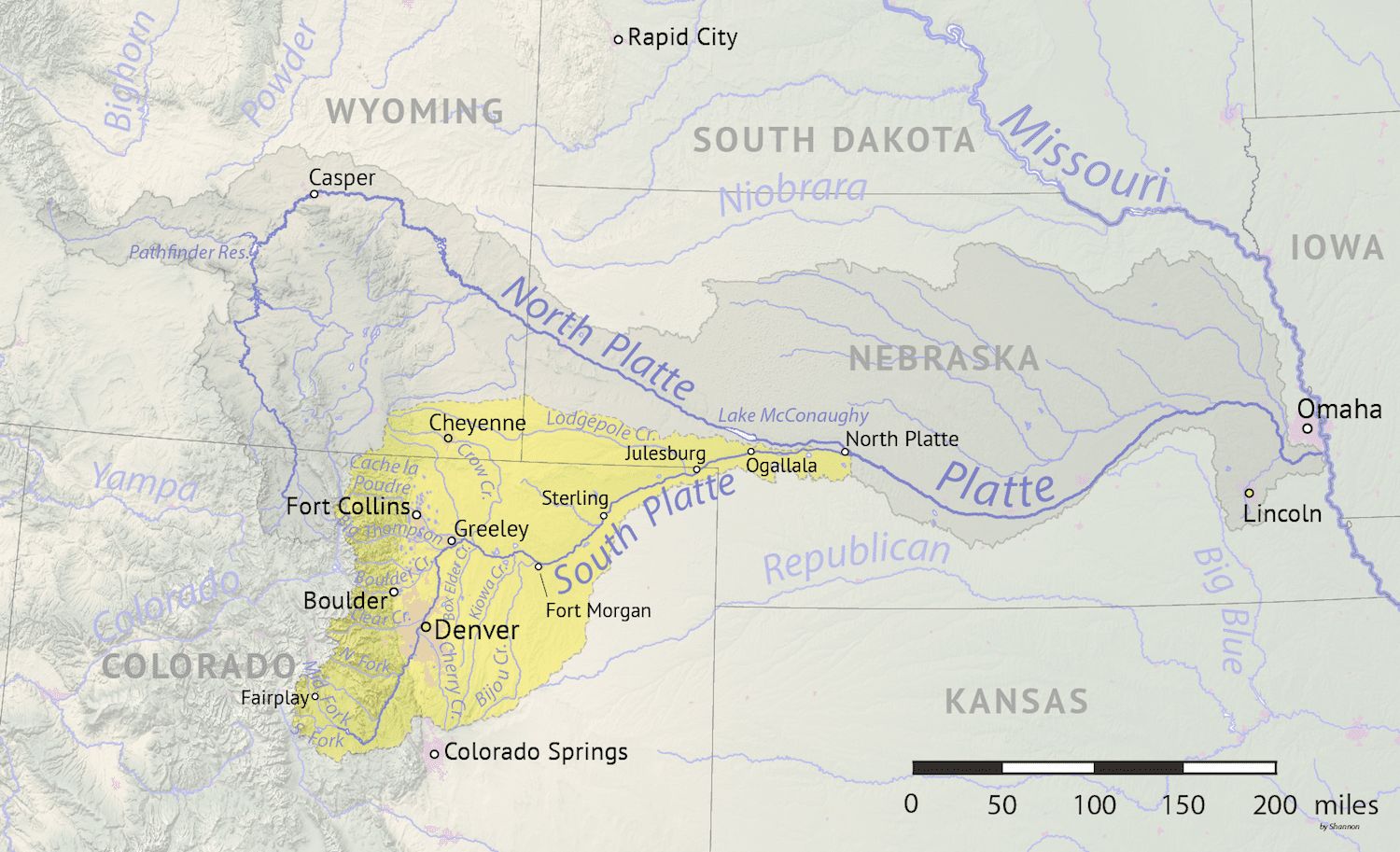- Water laws influence who faces water shortages, not the total amount of water.
- Population location and density significantly affect water demand and shortages.
- Evenly spreading population can reduce shortages and boost economic value.
November 6, 2024 — Water is essential for food production, economic prosperity, and ecosystems. Changes in climate and population growth are putting increasing pressure on water supplies, especially in arid regions like the western United States. A recent study published on the American Geophysical Union (AGU) website explores how water rights institutions and the location of populations within a river basin affect water demands, shortages, and economic values. The researchers developed a method to evaluate these factors using the South Platte River Basin in Colorado as a case study.
explores how water rights institutions and the location of populations within a river basin affect water demands, shortages, and economic values. The researchers developed a method to evaluate these factors using the South Platte River Basin in Colorado as a case study.
Key Findings in the Study.
- Impact of Water Laws: The type of water rights system in place doesn’t significantly change the total volume of water shortages in the basin. However, it does determine who experiences these shortages. For instance, systems that allocate water based on historical usage may favor certain users over others.
- Population Location and Density: Where people live and how densely populated those areas are substantially affect water shortages and economic outcomes. Populations concentrated upstream can lead to lower overall shortages if per-person water use decreases with increased urban density.
- Economic Value of Water Use: An even population distribution between upstream and downstream regions tends to result in lower water shortages and higher economic value, assuming that per capita water demand remains constant.
Methodology.
The researchers conducted around 1,800 simulations under different scenarios involving water rights institutions, climate conditions, and population distributions. They assessed how these variables interacted to affect water shortages and the economic value derived from water use.
Conclusion and Citation.
The study suggests that planning efforts must consider both water management and urban development patterns throughout a watershed. Accounting for return flows and where populations are located can reduce water shortages and enhance economic prosperity within a river basin.
Gharib, A. A., Arabi, M., Goemans, C., Manning, D. T., & Maas, A. (2024). Integrated water management under different water rights institutions and population patterns: Methodology and application. Water Resources Research, 60, e2024WR037196. https://doi.org/10.1029/2024WR037196
Image Credit: Map of the South Platte River drainage basin , a tributary of the Platte River, in the central US. Made using USGS National Map and NASA SRTM data, prepared by Shannon1 in May 2019. Licensed under the GNU Free Documentation License.
, a tributary of the Platte River, in the central US. Made using USGS National Map and NASA SRTM data, prepared by Shannon1 in May 2019. Licensed under the GNU Free Documentation License.

